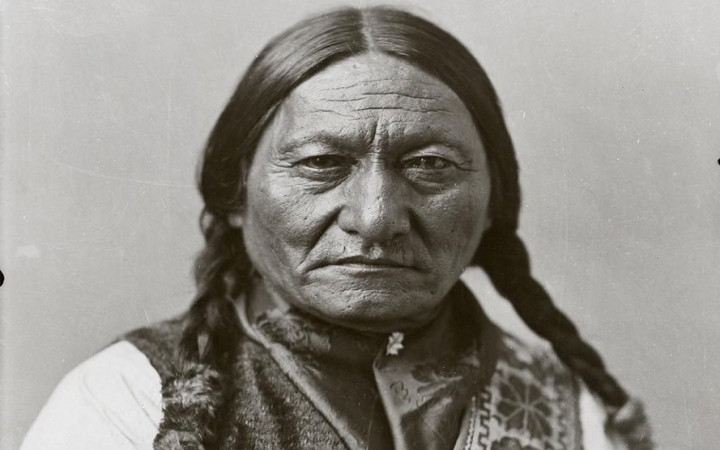Today’s Wonder of the Day was inspired by Ben. Ben Wonders, “Who was Sitting Bull?” Thanks for WONDERing with us, Ben!
Long before European settlers arrived along the eastern seaboard of what would one day become the United States of America, Native Americans thrived in numerous communities all across the continent. When you think of famous Native American , there's one name that might stand out — or sit! — more than others: Sitting Bull.
Sitting Bull was born around 1831 in what is now South Dakota. His family was part of the Hunkpapa people, a Lakota Sioux tribe that roamed throughout the Great Plains. Early in life, however, he was not known as "Sitting Bull." Instead, his family called him "Jumping Badger."
As a young boy, Jumping Badger was known for his quiet, steady personality. Rather than Jumping Badger, friends and family members instead gave him the nickname "Slow." That nickname would only last a few years, though.
At the age of 10, he killed his first buffalo. Then, at age 14, he got his first taste of battle in a Hunkpapa raid on a rival Crow tribe. Showing incredible bravery, he unseated a Crow warrior from his horse with his tomahawk.
To recognize his bravery, his father gave up his name and transferred it to his son. No longer Jumping Badger or Slow, he became Tatanka-Iyotanka or "Sitting Bull." The name paints a picture of a buffalo bull sitting on its haunches, patient and immovable. The name fit him and he would live up to it many times over the course of his life.
As a young man, Sitting Bull was no stranger to battle. His first of many encounters with American soldiers pushing westward into Native American lands came in 1863. He became known for legendary acts of bravery in battle.
Sitting Bull was also widely-recognized as a man of great insight and vision. Considered both a holy man and a brave warrior, he became the head chief of the entire Lakota Sioux nation around 1868. Under Sitting Bull's leadership, the various Sioux tribes united together in their struggle to maintain their way of life.
After gold was discovered in South Dakota's Black Hills region in 1874, conflict with American forces increased greatly. In 1876, Sitting Bull had a premonition that his people would soon score a great victory in battle. That vision came true at the Battle of the Little Bighorn.
During that famous battle, a confederation of tribes led by famous warrior Crazy Horse defeated American troops led by General George Armstrong Custer. Although Sitting Bull was not a warrior during the battle, his many followers believed that his premonition meant he possessed magical powers that brought the victory.
Despite the victory, Sitting Bull was forced to flee to Canada, where he stayed for several years. Eventually, he surrendered and returned to the U.S. and was held as a prisoner of war at Fort Randall in the South Dakota Territory.
After two years, Sitting Bull was released and allowed to live on Standing Rock Reservation. In his later years, he still fought to prevent Sioux lands from being taken by the U.S. government. In 1885, he even spent a few months traveling with the famous Buffalo Bill's Wild West show.
On December 15, 1890, Sitting Bull was killed in an incident at Standing Rock. Tribal police had been sent to arrest him in connection with his association with the rise of the Ghost Dance, a new tribal religion that American government officials feared would lead to renewed animosity between the Native Americans and the whites in the area.
His followers attempted to help him. In the commotion that followed, one of the Ghost Dancers fired a shot at police and a short gun battle ensued. More than a dozen people died, included Sitting Bull, who was shot in the head and chest.





